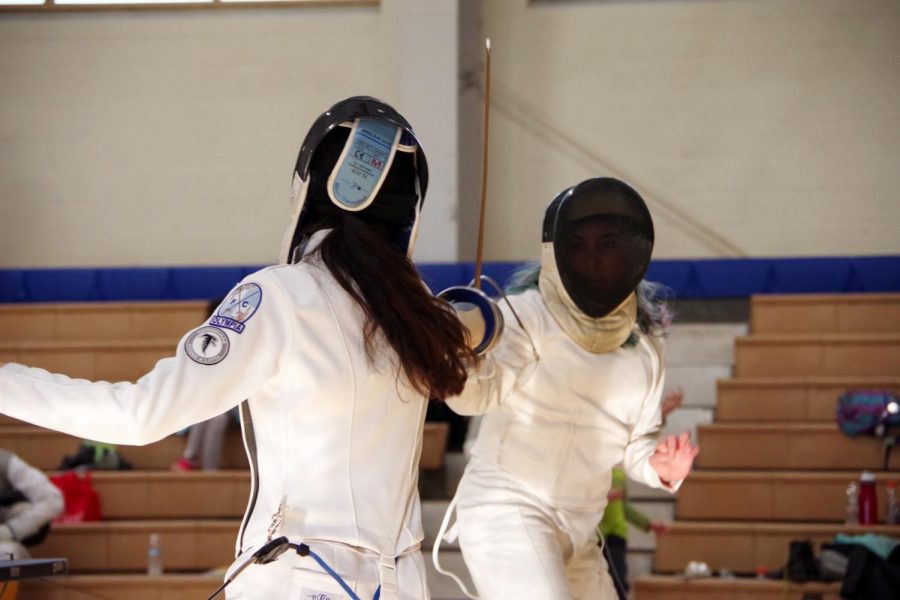CRLS Fencing Continues to Expand, Attracts New Members
Fencing Team Looks Enthusiastically Towards States Given New Talent
October 30, 2018
Although fencing has been a sport in the Olympics since its inception, it was only introduced at CRLS in 2014. From 16 members on the team in 2014 to more than 50 in Learn to Fence this fall, fencing has taken tremendous strides in the four years that it has been active.
When asked about the original team, Coach Angelica Brisk said, “About half of those people had already competed in fencing outside of high school fencing, and now we’re at the point where it’s more people who haven’t fenced than have. … I never expected us to be able to get more than 50 kids interested in fencing.”
A deterring factor for most people interested in fencing is its price. It seems that fencing at CRLS has provided a great opportunity for these people.
Mohammed Shafim ’19, one of the members on the team, said, “I wouldn’t have done [fencing] had it not been at the school because it’s very expensive. [The school’s program] has given me access to all the proper equipment and training.”
For a full set of entry-level gear, one can expect to pay anywhere between $100 to $200. To people new to the sport, those numbers may seem daunting. However, since CRLS covers those costs with their own equipment, beginners are able to try out the sport without any drawbacks.
David Lee ’19 also provides insight as to why fencing has grown so quickly at CRLS. He claims, “Fencing grew large because of the outreach that people in the fencing team did in the previous years to their friends and other classmates.”
For those who didn’t know, fencing is based on real sword duels, and that aspect of the sport has intrigued many newcomers. Elias Gibson, a freshman and new member of the fencing team, stated, “A lot of people like it; they think it’s cool because it’s sword fighting, and that makes a lot of people interested in joining it. Also, just combat-based sports are very interesting to a lot of people.”
Fencing began as a sport around the 15th century. However, its roots go back thousands of years to as far as 1190 BC, according to the official Olympic page on fencing. The sport is split into three blades—épée, sabre, and foil—each with their own weapon and rules.
Regardless of whether or not you’re a fencer, you should keep your eyes peeled for the CRLS team at this year’s state competition. “I think we did really well last year at States, and we’re only getting better as a team,” épée team captain Sakib Asraf ’19 says.
With a lot of new talent this year, the team is looking to go even further than before. Whether it’s because of the great outreach that previous members have done, or the equipment and access that it provides, fencing at CRLS has grown a considerable amount since its start. Nevertheless, as Shafim points out, “Basketball doesn’t have blades.”
This piece also appears in our October 2018 print edition.










